18 Types of Push Ups (Variations): Novice, Intermediate, Advanced
The push-up is known as the calisthenics exercise. No serious bodyweight workout is complete without it.
Over the many years calisthenics training has been practiced, numerous variations of the push-up have been developed seeking to build upon its comparatively simplistic execution and numerous benefits.
In this article, we will list the 18 most commonly practiced push-up variations to add into your workout - and what makes them unique among their counterparts.
What Makes an Exercise a "Push-Up"?
Because of how different most push-up variations appear to the conventional push-up, it may be difficult to identify what is considered to be a push-up variation and what is not.
Fortunately, there are a few key characteristics to look out for.
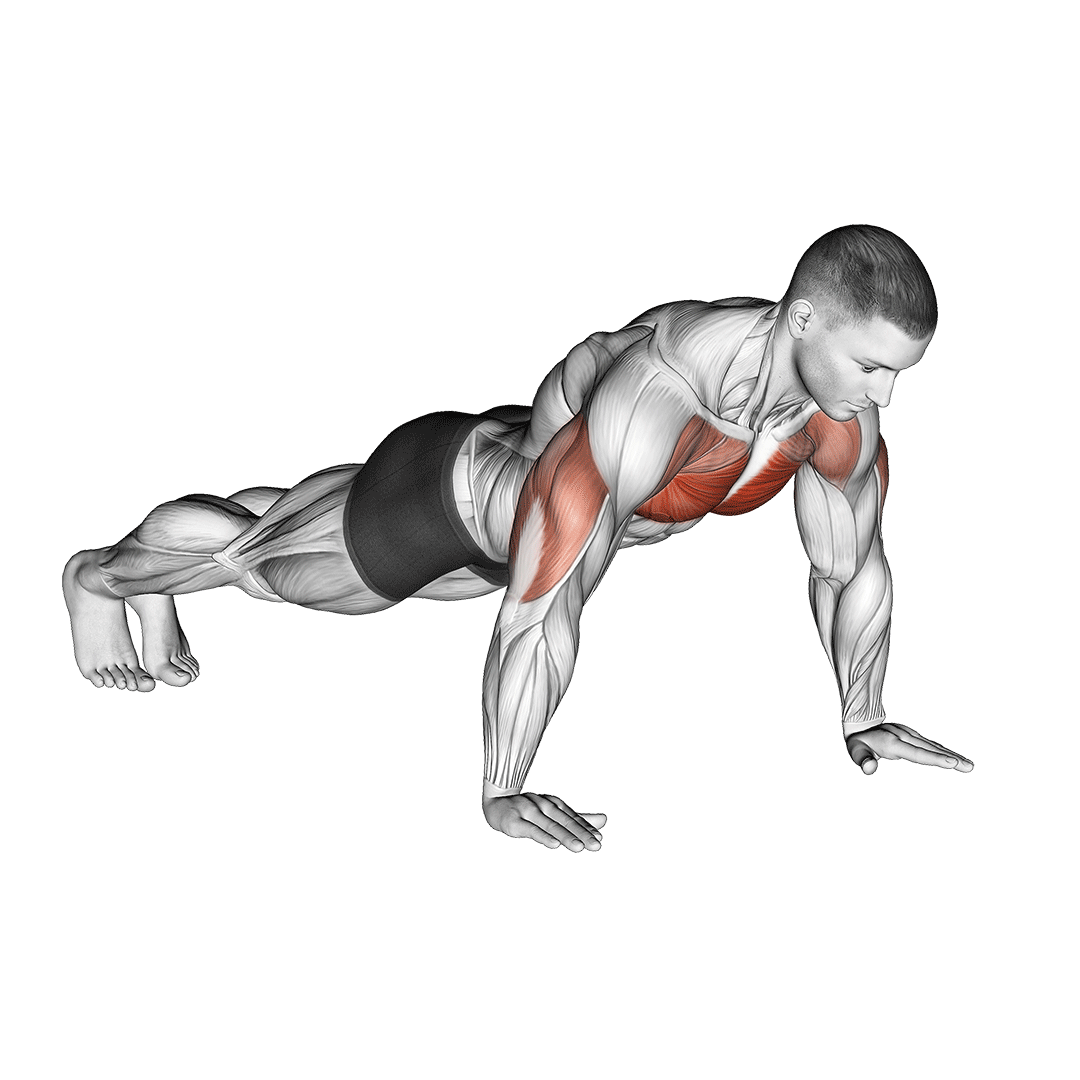
If the exercise targets the deltoids, pectorals or triceps, if it involves significant elbow extension in a plank position or if it requires pushing the body away from the floor against a vertical source of resistance - then it likely falls under the category of a push-up.
Why Can’t You Just Do Regular Push-Ups Instead?
In truth, you can do conventional push-ups for the entirety of your training career. However, doing so is not only inefficient but can also result in injury.
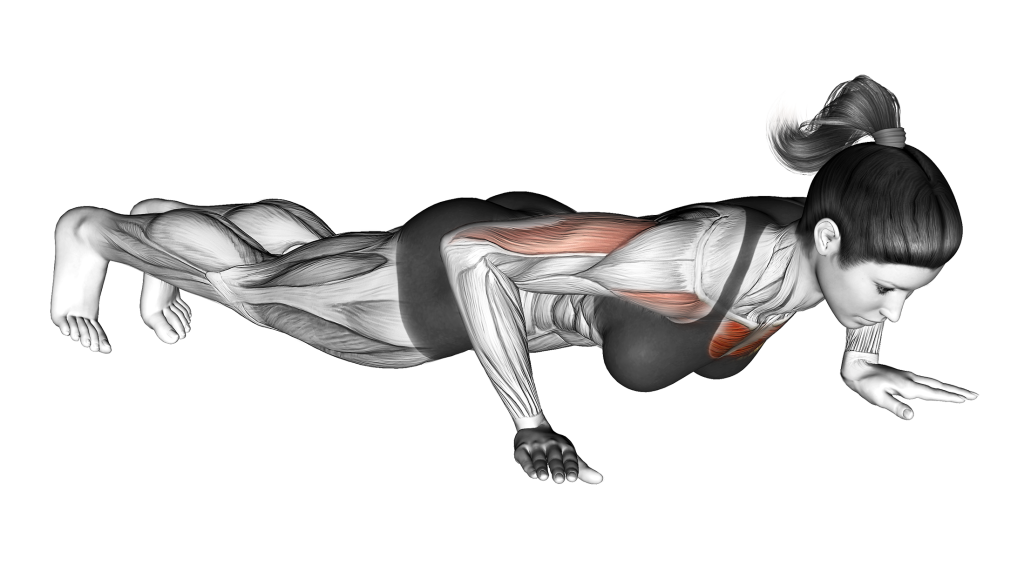
As the body grows stronger and adapts to the stresses of the conventional push-up, it will begin to respond less and less to the push-up itself, and instead require a more difficult variation in order to preserve the flow of your progression.
Even in cases where the exerciser cannot yet perform a full set of push-ups, making use of an alternative variation rather than performing low-volume sets is the better option.
Novice Difficulty Push-Ups
The following push-up exercises are considered to be easier than standard push-ups, and are perfect for beginners in bodyweight training.
1. Assisted Push-Ups
Assisted push-ups are simply conventional push-ups performed with support from TRX or resistance bands.
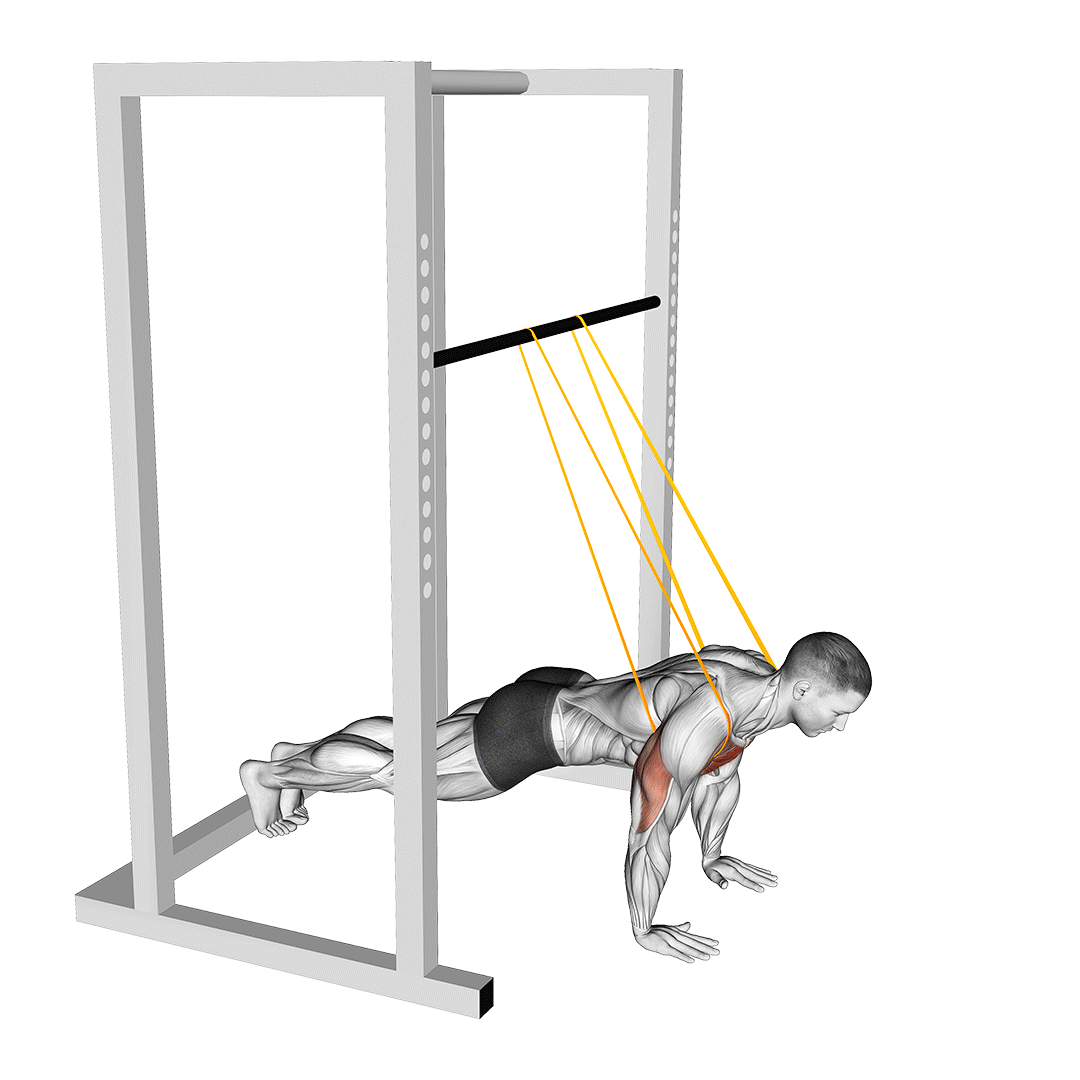
Muscles Worked
Assisted push-ups train the pectoral muscles, shoulders, and triceps at a moderate intensity.
Purpose as a Push-Up Variation
Assisted push-ups allow novices to practice performing conventional push-ups without the need to lift their entire body’s weight with each repetition.
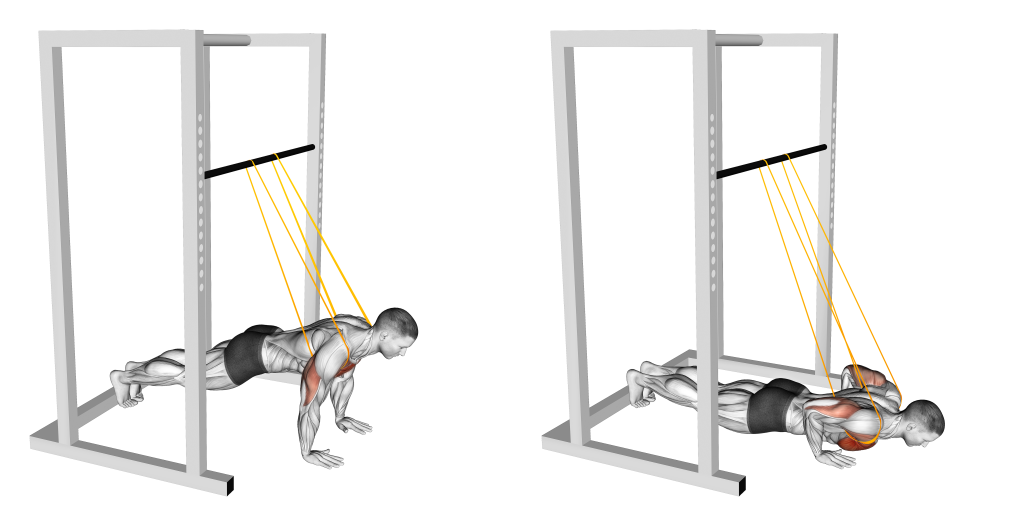
Advantages
Unlike other introductory push-up variations, the assisted push-up allows novices to practice proper push-up mechanics at an exact level. This can be invaluable for those who find their progression to be limited by poor mechanics.
2. Knee Push-Ups (Kneeling Push-Ups)
The kneeling push-up is a push-up performed with the exerciser’s knees drawn upwards, reducing the demand placed on the core musculature and subsequently also reducing how much weight is being lifted with each repetition.

Muscles Worked
Knee push-ups work the triceps brachii, deltoids, and pectorals to a moderate intensity. Unlike many other push-up variations, kneeling push-ups will feature far less contraction of the core and glutes.
Purpose as a Push-Up Variation
Knee push-ups are performed in lieu of regular push-ups for individuals who cannot yet lift the entire weight of their upper body - or by those who cannot properly stabilize the push-up stance.
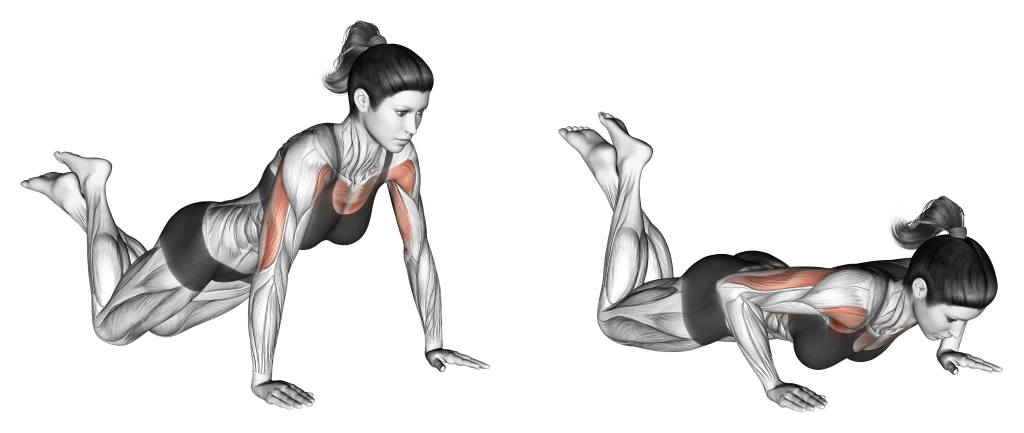
Advantages
Kneeling push-ups are particularly effective for maximizing push-up volume without being limited by the core musculature growing fatigued. In addition, they are also excellent for building up sufficient upper body strength prior to doing more advanced push-up variations.
3. Incline Push-Ups
As its name implies, the incline push-up is a variation of the push-up performed with the upper body set at an upwards incline, raising it higher than the lower body.
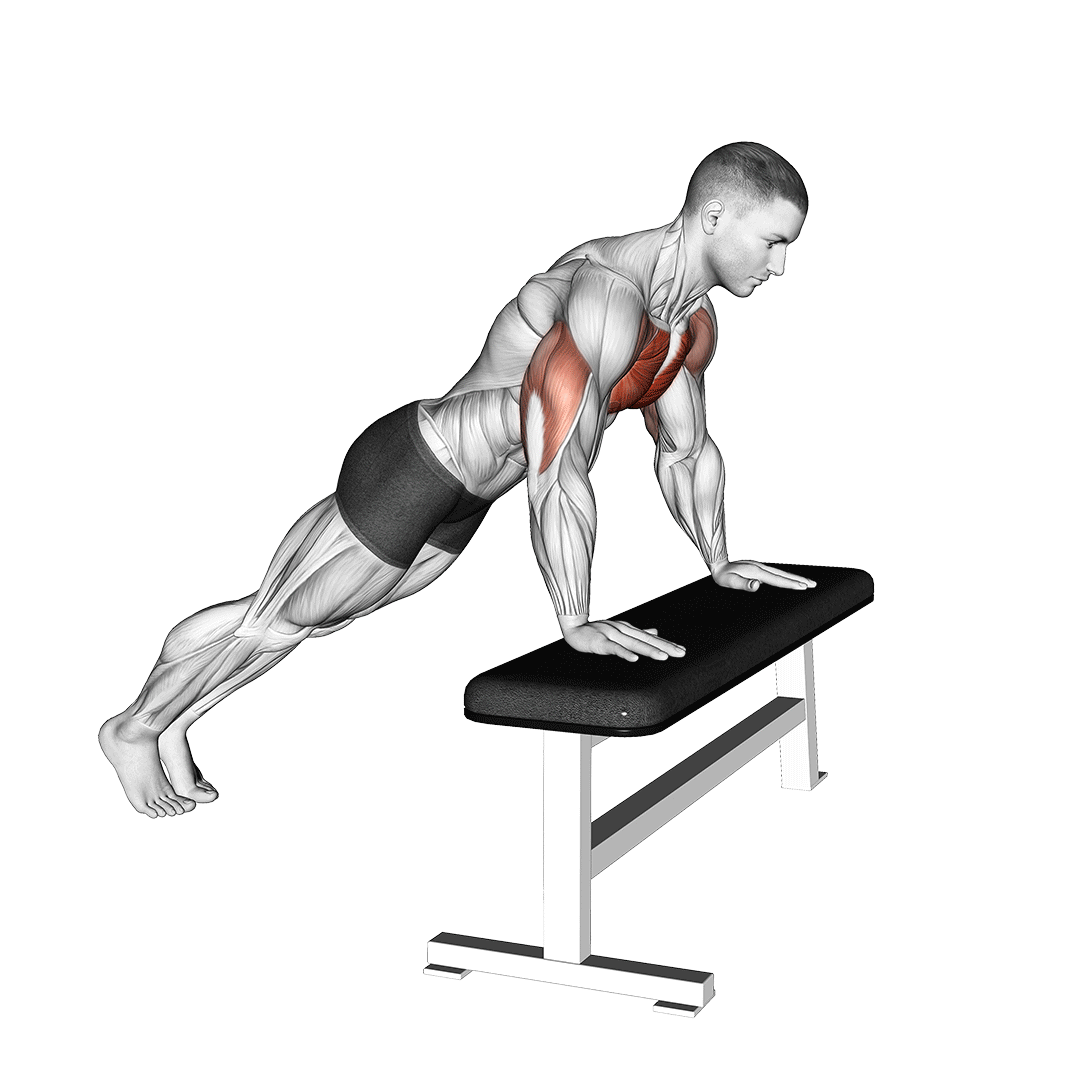
Muscles Worked
Incline push-ups work much the same muscles as other push-up variations; the triceps brachii, pectorals, and shoulders. In particular, the incline push-up emphasizes the lower section of the chest the most.
Purpose as a Push-Up Variation
Incline push-ups are an easier and more accessible variation of the conventional push-up, and allow for novices to build up the necessary upper body strength to progress further into their training.
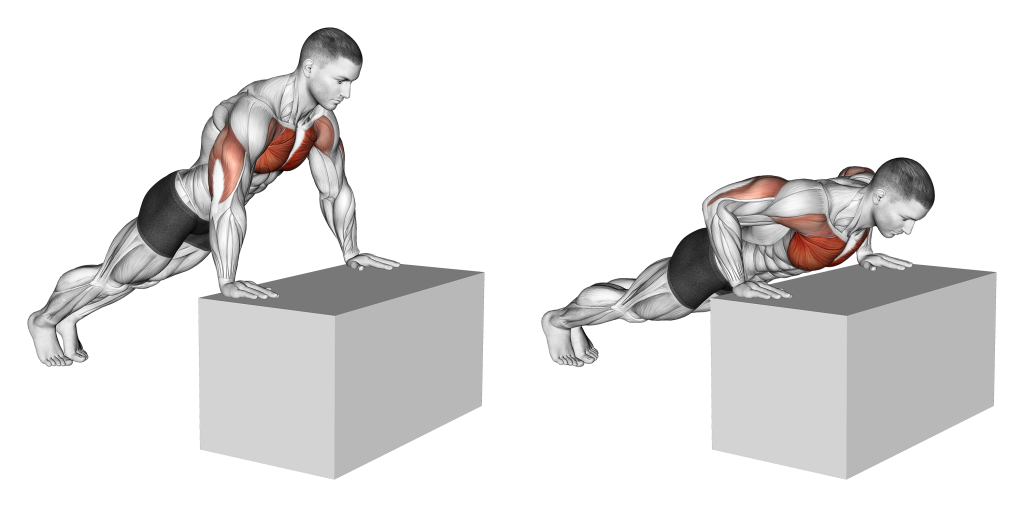
Advantages
The incline push-up allows lifters to reduce the amount of weight moved in an otherwise mechanically similar push-up repetition, and can be quite useful for individuals that wish to avoid assuming a plank position on the floor.
In addition, EMG activity indicates a greater emphasis on the lower section of the pectoral muscle group.
4. Wall Push-Ups
Wall push-ups are as accessible and novice-friendly a push-up variation as they come - as the exerciser simply pushes against a wall while in a standing position, replicating the movement pattern of a push-up but with greatly reduced intensity.
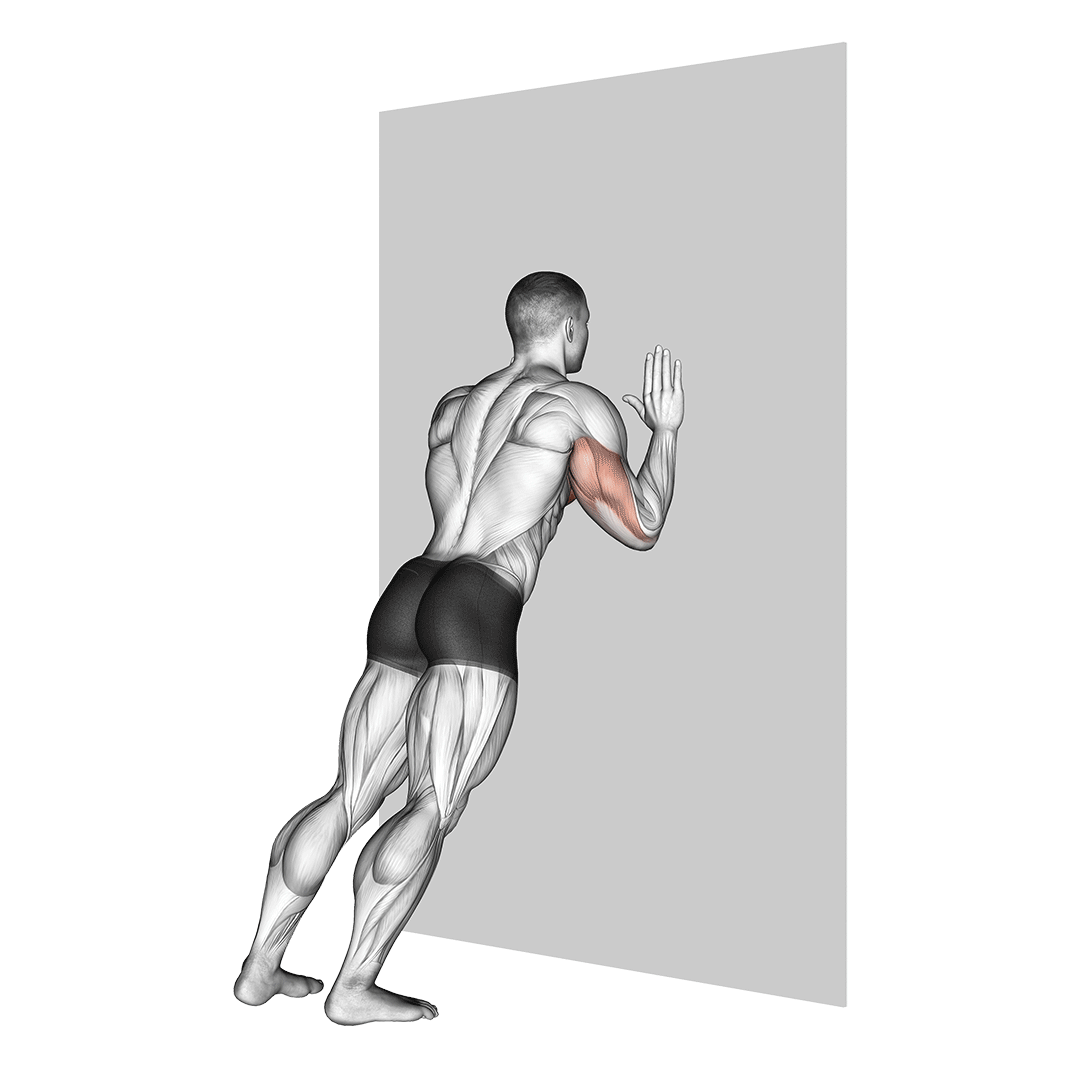
Muscles Worked
Wall push-ups work the anterior deltoid head, triceps brachii, and pectoral muscles.
Purpose as a Push-Up Variation
Wall push-ups are meant to act as a rehabilitative or introductory exercise to push-ups as a whole.

Advantages
The majority of training stimulus derived from wall push-ups comes in the form of muscular tension and isometric contraction, as it features a rather small range of motion and very little resistance whatsoever.
This makes it perfect for usage in clinical therapy, as well as for individuals that cannot perform any other novice-level push-up variation whatsoever.
Intermediate Difficulty Push-Ups
The following push-up exercises are considered to be approximately as difficult as a standard push-up, and are generally performed by individuals with at least some level of physical training under their belt.
1. Negative Push-Ups
The “negative” or eccentric push-up is an otherwise ordinary push-up save for the greatly lengthened eccentric phase of the movement pattern.
This allows lifters to further maximize the strength and mass building benefits of the push-up without the need for significant amounts of repetition volume.
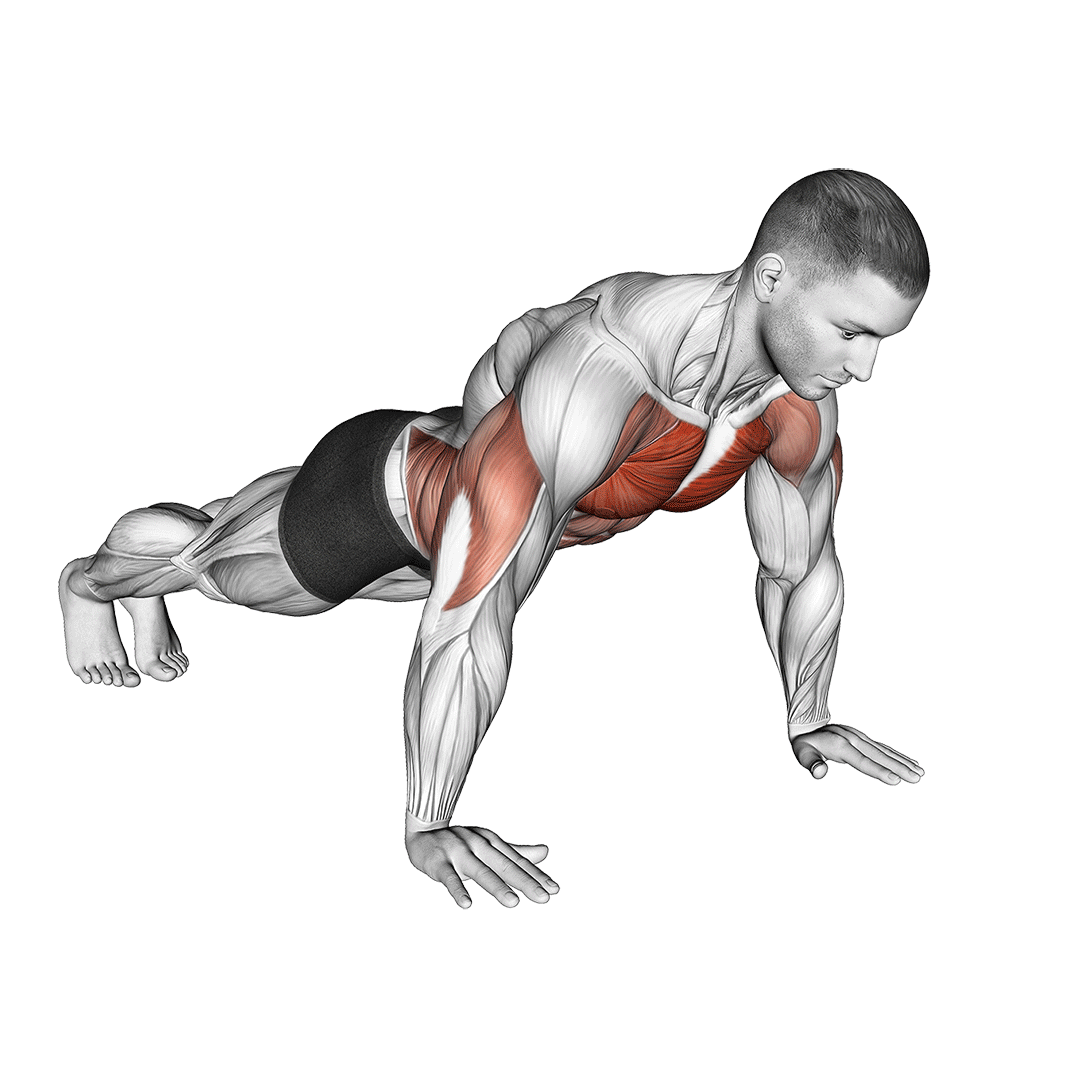
Muscles Worked
Negative push-ups work the anterior deltoid head, triceps brachii, pectoral muscles, and serratus anterior.
Purpose as a Push-Up Variation
The negative push-up is most often employed as an alternative to the push-up in cases where volume-based progression is no longer convenient, or if the athlete cannot perform a full set of push-ups but wishes to retain the mechanics and movement pattern nonetheless.
Advantages
The negative push-up is considerably easier on the joints of the body as there is significantly less dynamic contraction overall, and is particularly useful for building upper body stability due to the lengthy time under tension of each individual repetition.
2. Wide Grip Push-Ups (Wide Arm Push-Ups)
Wide grip or wide arm push-ups are a push-up variation where the hands are set significantly wider than shoulder width apart, allowing for greater recruitment of the pectoral muscles in exchange for reduced triceps brachii involvement.
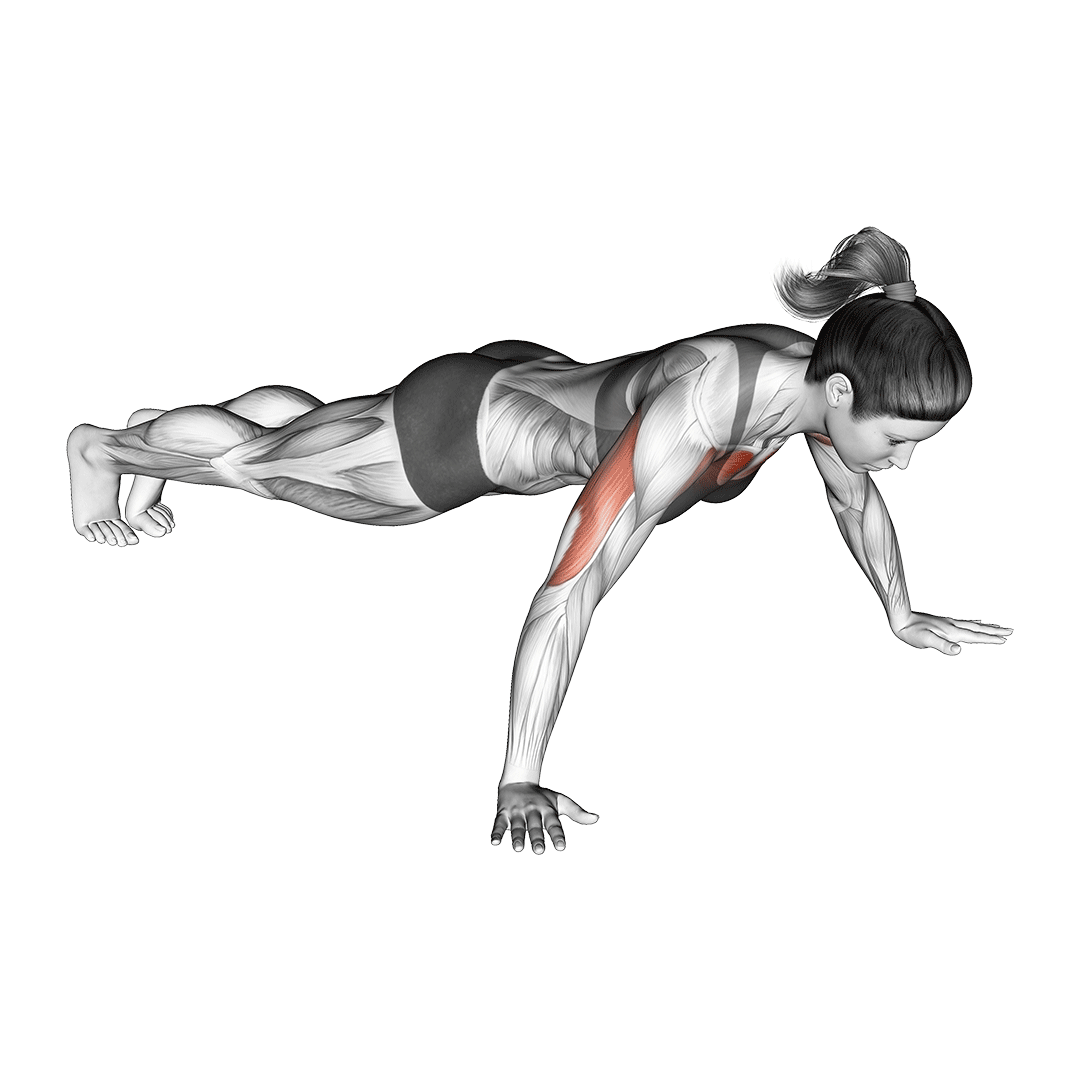
Muscles Worked
Wide grip push-ups place additional emphasis on the pectoral muscles, but will nonetheless also recruit the anterior deltoid head, serratus anterior, and the triceps to a certain degree.
Purpose as a Push-Up Variation
Wide grip push-ups are employed as a substitute exercise to the conventional push-up for the purposes of strengthening a lagging set of pectoral muscles.

They are also occasionally used as an easier alternative due to the inherently shorter range of motion, although “easier” will depend on the dominant muscle group of the athlete’s upper body.
Advantages
Wide grip push-ups are the most convenient method of targeting the pectoral muscles with a push-up variation, and can even act as a substitute to parallel bar dips in certain scenarios.
3. Close Grip Push-Ups (Narrow Grip Push-Ups)
The close grip or narrow grip push-up is a variation of the push-up where the hands are set at less than shoulder width apart.
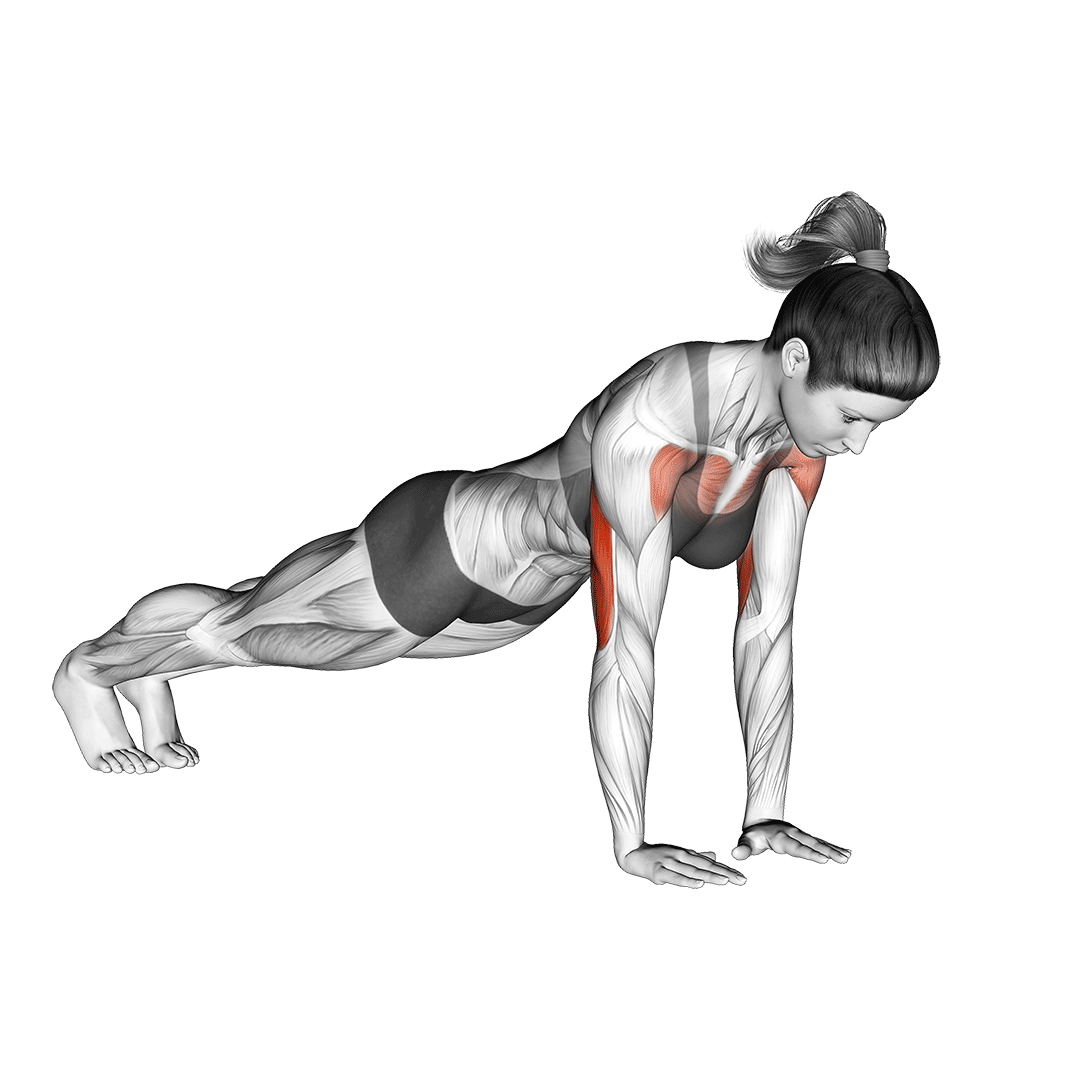
This places far more emphasis on the triceps brachii muscles, but also makes the movement more difficult to stabilize.
Muscles Worked
Close grip push-ups place a particular emphasis on the triceps brachii, but will also target the anterior deltoids, pectoral muscles, and the serratus anterior.
In addition, the glutes and core will also be worked to a greater extent in comparison to regular push-ups.
Purpose as a Push-Up Variation
Close grip push-ups are employed to target the triceps in a manner that other push-up variations cannot achieve.
Advantages
Close grip push-ups allow for significant loading of the triceps brachii without necessarily needing to alienate the pectoral or shoulder muscles.
In addition, they are excellent as a substitute to other triceps-focused bodyweight exercises that may require additional equipment.
4. Deficit Push-Ups
Deficit push-ups are a form of push-up where the lifter’s hands are elevated higher off the ground, allowing for a greater range of motion to be achieved and subsequently also greater benefits.
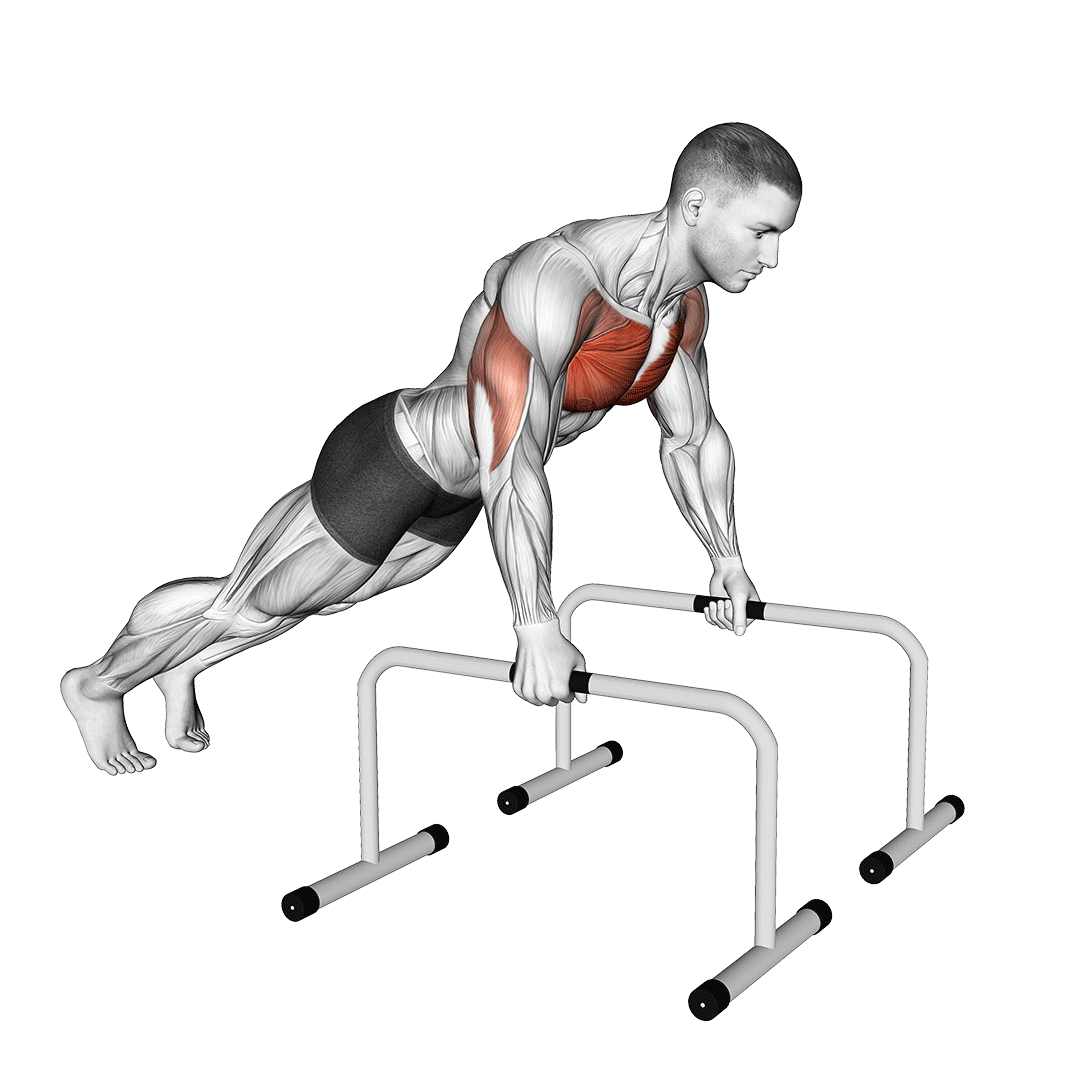
Muscles Worked
Deficit push-ups place additional emphasis on the muscles of the chest, but will also target the deltoids and triceps brachii.
Purpose as a Push-Up Variation
Deficit push-ups are used either as a method of building upper body explosiveness or as a more advanced variation of the conventional push-up - allowing the exerciser to take their training even further without the need for learning a more complex movement.
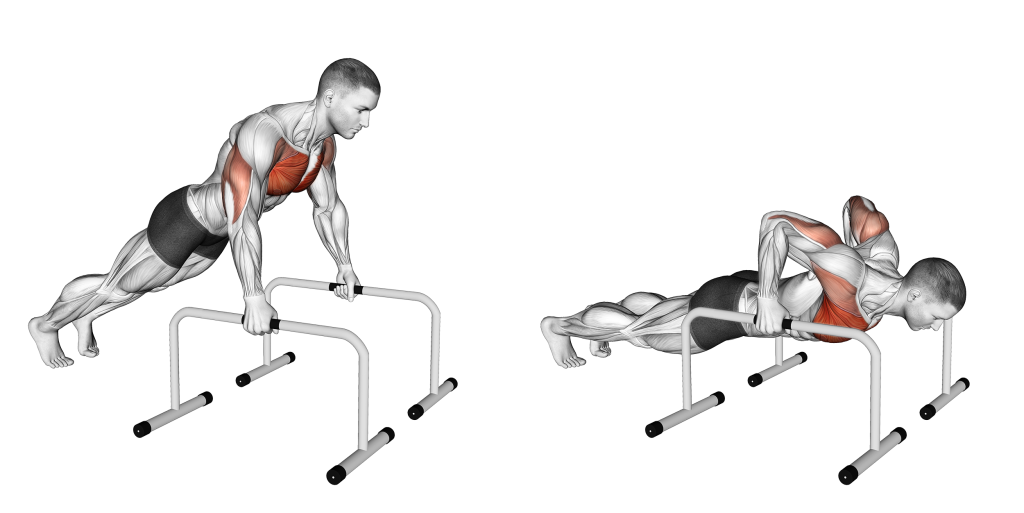
Advantages
The deficit push-up features a significantly longer time under tension and range of motion, meaning that the muscles of the upper body are challenged to a greater extent than what is seen with conventional push-ups.
This equates to greater development, especially in regards to the pectoral muscles and general upper body explosiveness.
5. Knuckle Push-Ups
Knuckle push-ups are simply regular push-ups performed on the knuckles of the hands, rather than with the palms splayed flat. Apart from a slightly larger range of motion, this confers no other muscle-related benefits.
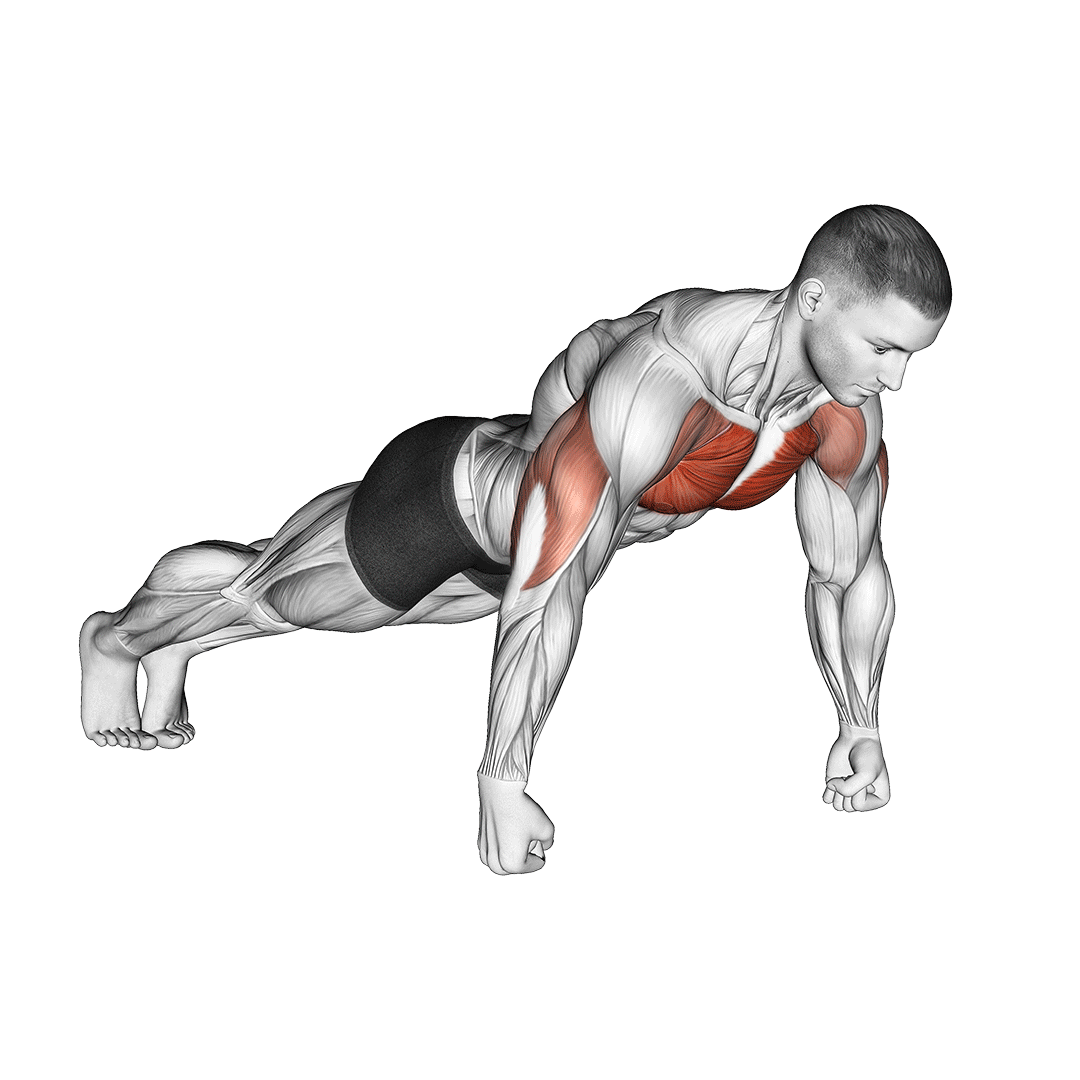
Muscles Worked
Knuckle push-ups train the pectorals, anterior deltoid head, and triceps brachii.
Purpose as a Push-Up Variation
Knuckle push-ups are more often performed by martial artists and athletes as a method of conditioning their hands and forearms.

However, some calisthenics athletes will use them as an alternative to the deficit push-up when no suitable equipment is available.
Advantages
Knuckle push-ups place significant strain on the tissues of the hands and wrists, and as such supposedly lead to reduced pain sensitivity and greater durability therein.
6. Diamond Push-Ups
Diamond push-ups are an alteration of the conventional push-up where the hands are set beneath the torso, forming a “diamond” shape with the fingers as they are splayed out.

Muscles Worked
Diamond push-ups emphasize the triceps brachii, but also target the anterior deltoid head and the pectorals as well.
Purpose as a Push-Up Variation
Diamond push-ups are performed for much the same reason as close grip push-ups - that is, greater triceps development.
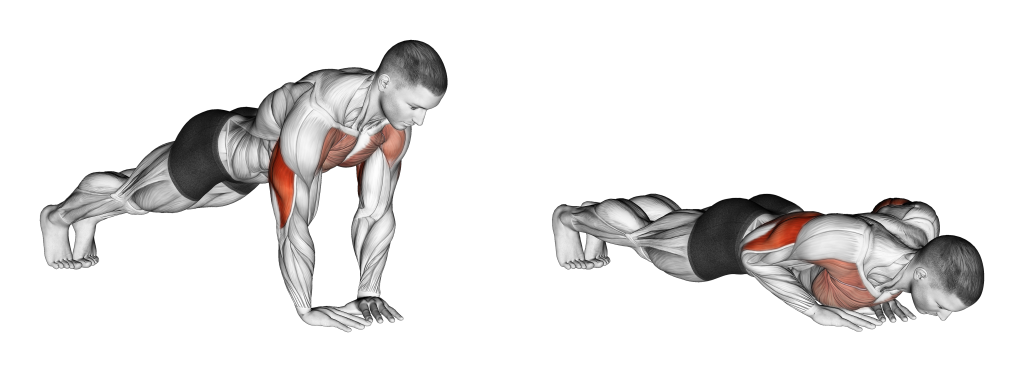
In addition, they are also used as a progression step from the conventional push-up due to the greater intensity therein.
Advantages
Unlike many other versions of the push-up, the diamond push-up is especially useful for targeting the triceps brachii in an elbow-friendly manner.
In addition, it is used as a more stable alternative to the close grip push-up, which does not feature the same hand placement and arm angle.
7. Decline Push-Ups
Decline push-ups are simply conventional push-ups performed with the legs elevated higher than the torso, causing more weight to be loaded onto the upper body’s musculature.
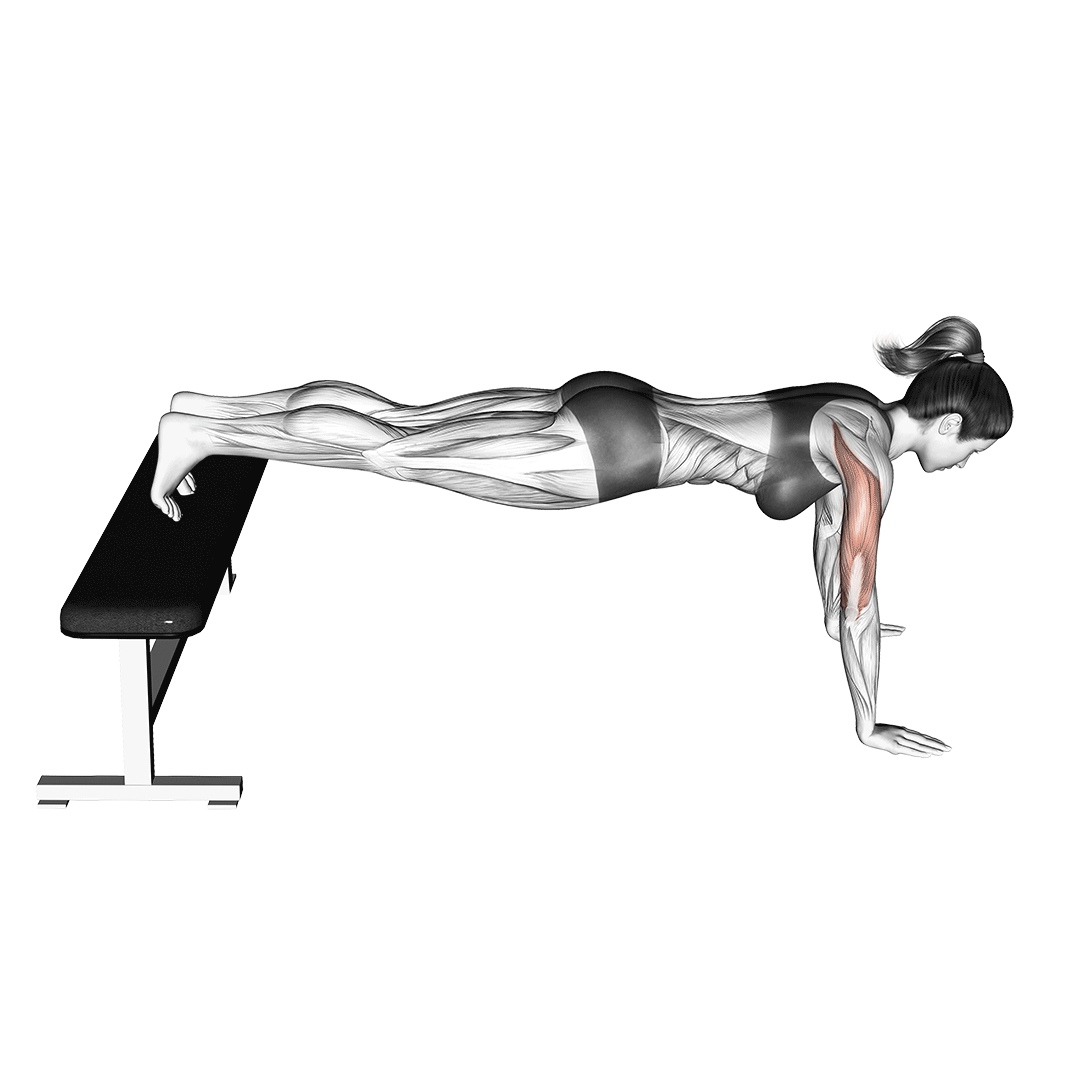
Muscles Worked
Decline push-ups target the upper chest quite effectively, but also work the triceps brachii and anterior deltoid head as well.
Purpose as a Push-Up Variation
Decline push-ups are a simple and easy way of increasing the resistance of an otherwise conventional push-up, and are used for the purposes of progression.

Advantages
Decline push-ups allow for greater loading of the upper body without the need for equipment or the usage of more mechanically complex push-up variations.
Furthermore, they allow athletes to emphasize the upper section of their pectorals - of which is quite difficult with calisthenics exercises alone.
8. Archer Push-Ups
Archer push-ups are a more dynamic variation of the wide grip push-up where the athlete will lower themselves in an intentionally askew manner as their hands are set wider than shoulder width apart.
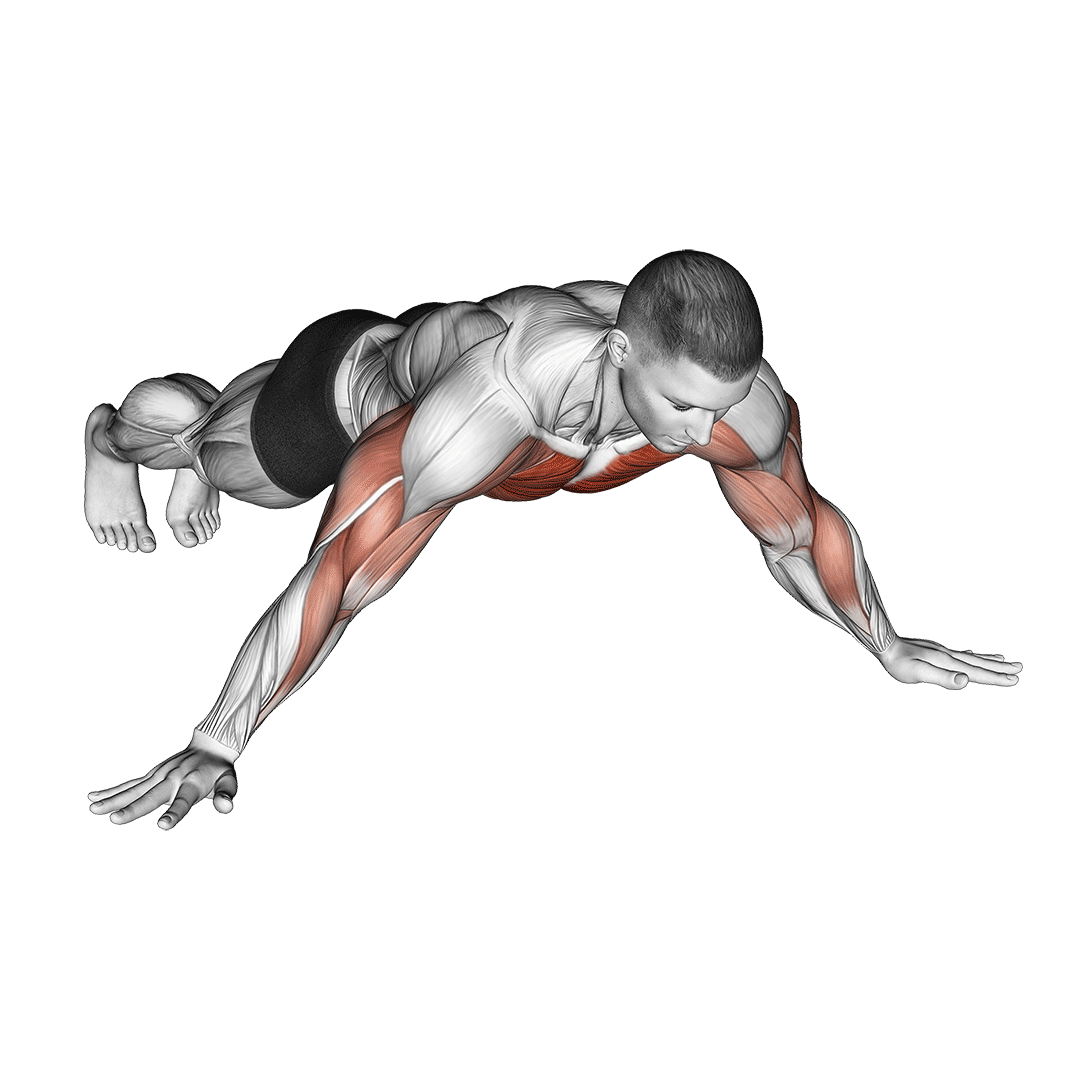
Muscles Worked
Archer push-ups emphasize the pectoral muscles, but will also target the triceps and the anterior deltoids in addition.
Purpose as a Push-Up Variation
Archer push-ups are employed for both emphasizing the pectoral muscles, as well as greater loading of one side of the body at a time.
Advantages
Archer push-ups feature a larger range of motion and a one-sided distribution of the body’s weight.
This equates to significantly more intense repetitions, and allows the athlete to create a more intense workout without the need for equipment or altering the orientation of their push-up.
Advanced Difficulty Push-Ups
The following exercises are considered to be “advanced” variations of the push-up, meaning that individuals will need to already be quite proficient at calisthenics to perform them safely.
1. Clapping Push-Ups
Clapping push-ups are a highly dynamic push-up variation where the athlete will launch themselves into the air and clap their hands together once the initial concentric phase is complete.
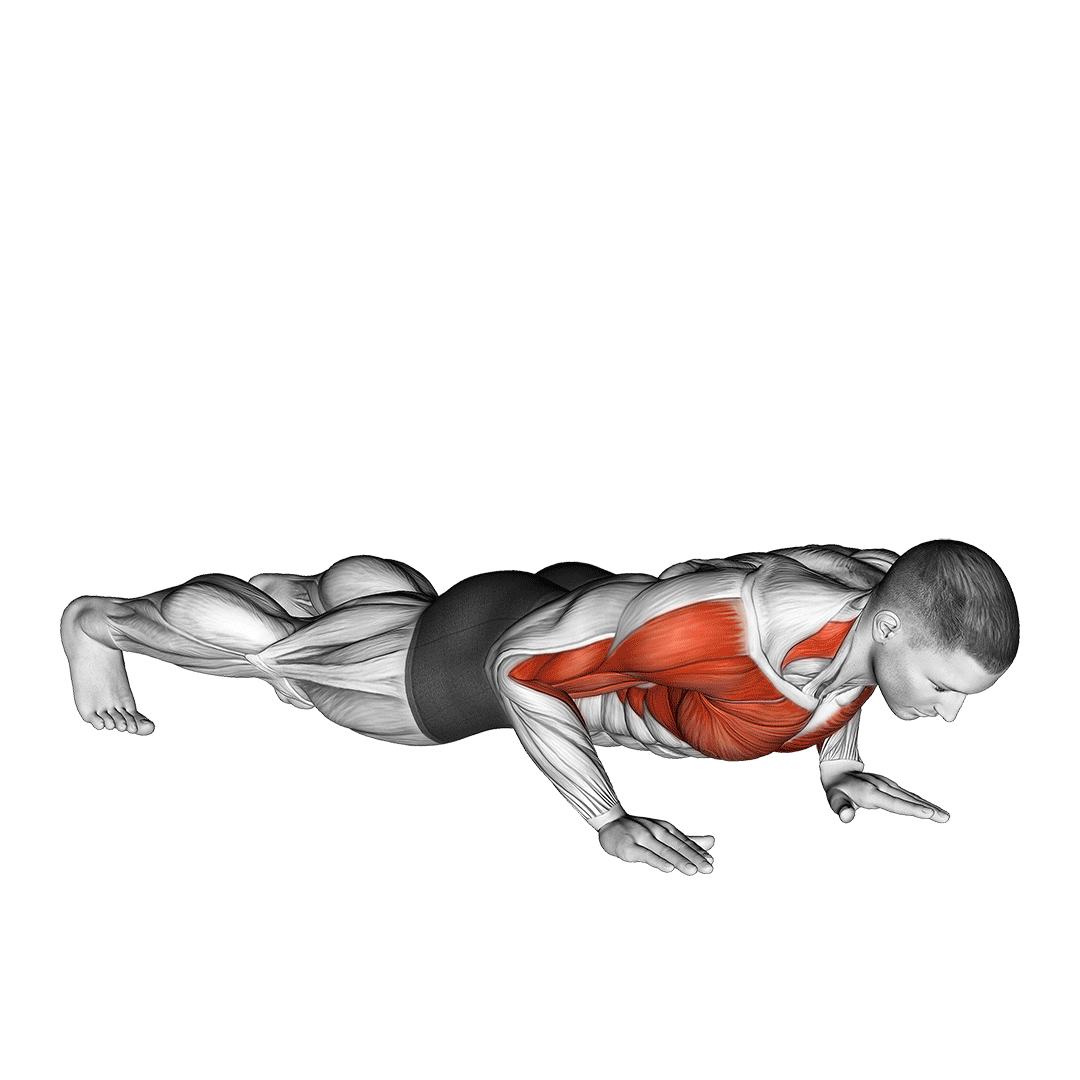
Muscles Worked
Clapping push-ups target the pectoral muscles, deltoids, triceps brachii, and serratus anterior to great intensity.
Purpose as a Push-Up Variation
Clapping push-ups are most often used as a method of building explosive power and general athleticism in the upper body.
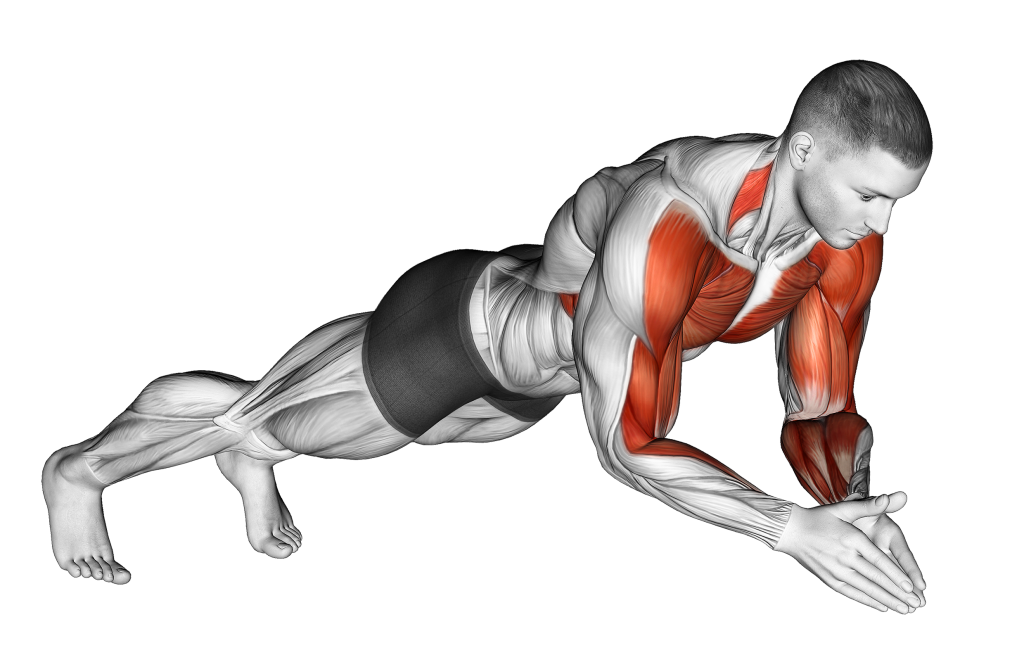
Advantages
Clapping push-ups are excellent for building explosiveness, and are particularly useful for martial artists and other athletes in need of rapid force output from their upper body.
2. Pike Push-Ups
Pike push-ups are a variation of the standard push-up where the athlete forms a triangle with their body, pointing the torso at a downwards angle to the floor.
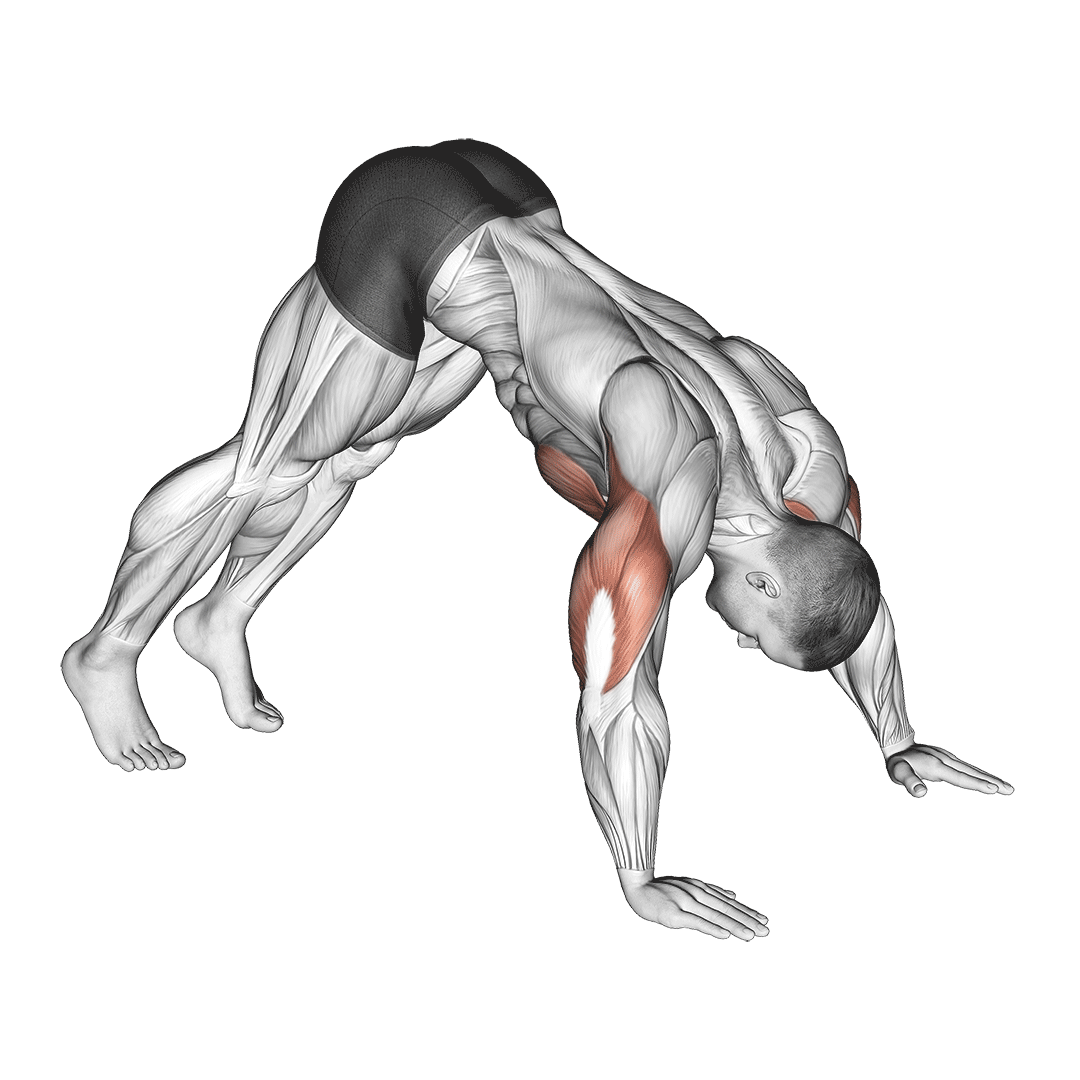
Muscles Worked
Pike push-ups work the entirety of the deltoids, as well as the triceps brachii and the pectorals.
Purpose as a Push-Up Variation
Pike push-ups are used as an introduction to inversion exercises or as one of the few ways to train all three deltoid heads with bodyweight resistance alone.
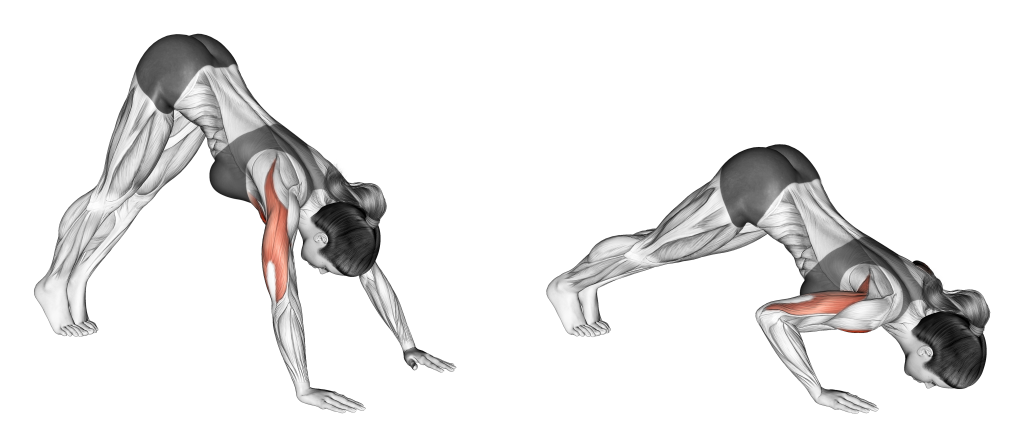
Advantages
Pike push-ups are excellent for acting as a progression step to more advanced inversion exercises like the handstand push-up or decline pike push-up.
3. Sphinx Push-Ups
The sphinx push-up is an advanced push-up variation where the athlete will begin the repetition on their forearms and raise themselves through pure triceps strength.

Muscles Worked
Sphinx push-ups are primarily a triceps brachii exercise, but also involve the anterior deltoid head, pectorals and serratus as well.
Purpose as a Push-Up Variation
Sphinx push-ups are utilized by calisthenic athletes as a supplementary movement for greater triceps growth.

Advantages
Sphinx push-ups allow for excellent triceps development to be achieved without the need for push-up variations that require significant elbow mobility,
4. Dive Bomber Push-Ups
Dive bomber push-ups are an even more difficult variation of the pike push-up where the athlete will continue the movement beyond simply lowering their chest to the floor, instead following upwards into a stance similar to the yogic seal pose.

Muscles Worked
The dive bomber push-up targets the triceps brachii, pectorals, the entirety of the deltoids and much of the core.
Purpose as a Push-Up Variation
Dive bomber push-ups build full upper body pushing strength while simultaneously acting as a mobility exercise, making them excellent for functional fitness programs.

Advantages
Unlike the pike push-up, the diver bomber push-up is highly dynamic and performed in a slow and controlled manner. This creates a focus on muscular tension and helps develop isometric strength of not only the shoulders, but also the rest of the upper body pushing muscles as well.
5. Handstand Push-Ups
Handstand push-ups are a highly advanced push-up variation where the athlete inverts themselves in a handstand position and lowers their torso towards the floor.
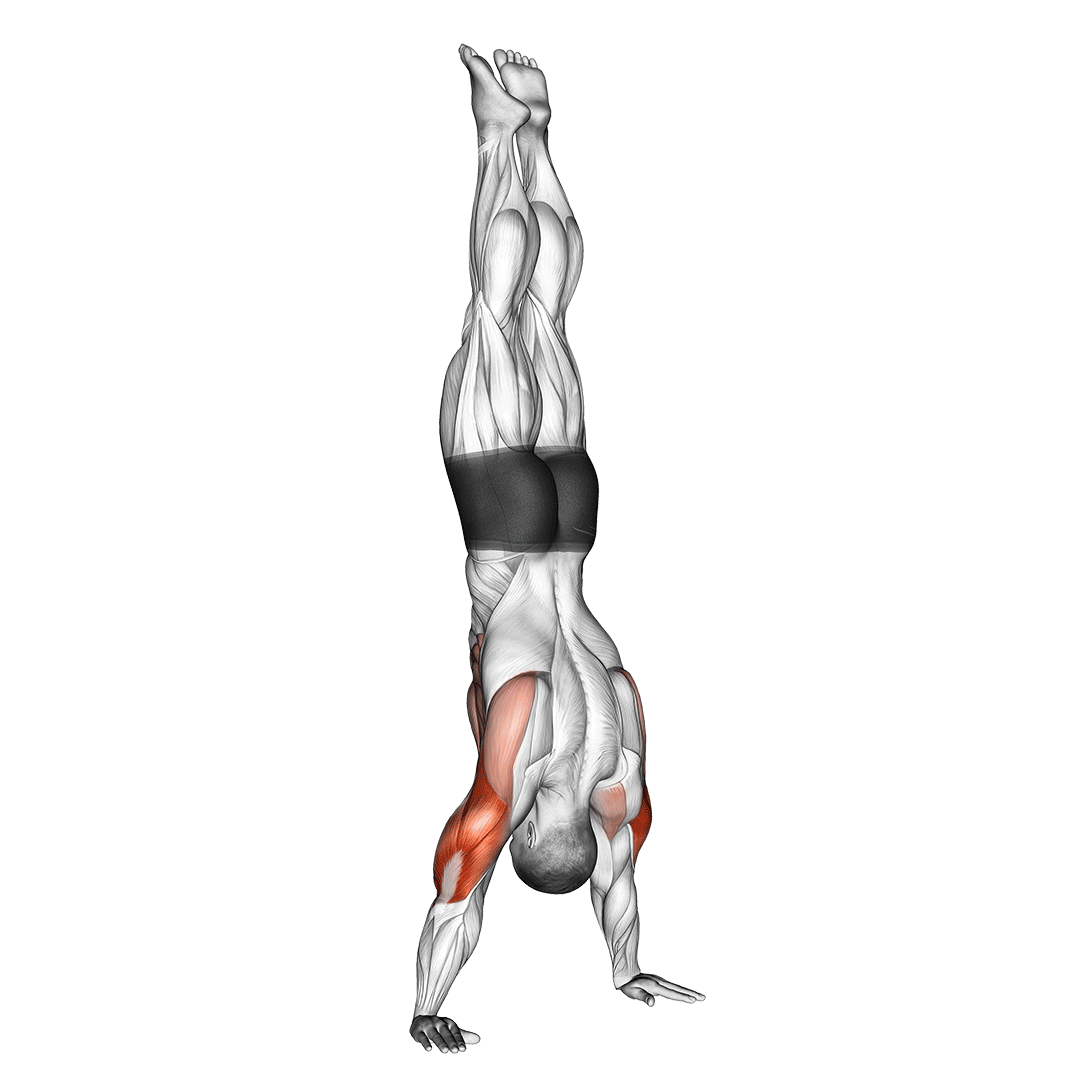
Muscles Worked
Handstand push-ups primarily target the deltoids and triceps brachii, but also work the pectoral muscles and trapezius.
Purpose as a Push-Up Variation
Handstand push-ups are used by advanced calisthenics athletes to primarily train their deltoids, but are also employed to improve general upper body endurance and power.
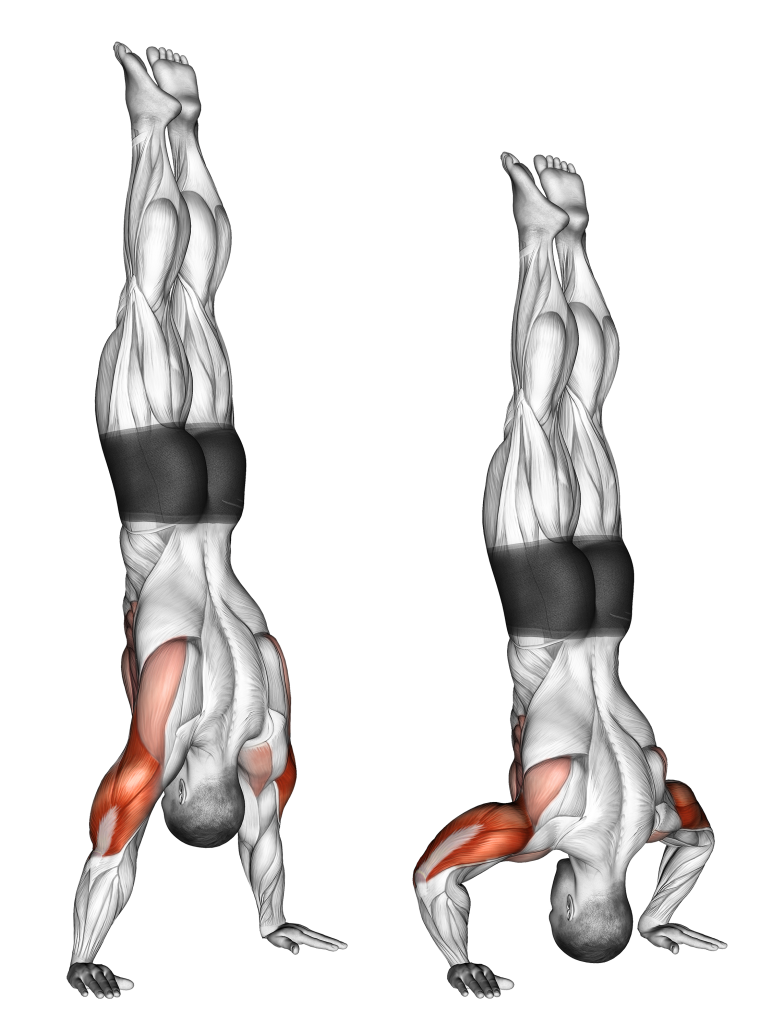
Advantages
The handstand push-up is unique by way of its high-intensity and high-reward execution, often with most athletes only being able to perform a few repetitions within a set.
It is one of the few bodyweight exercises that can be considered truly deltoid-focused, and builds considerable bodily control, explosiveness and stability.
Which Push-Up Variation Should You Do?
With the sheer number of different push-up variations out there, it can be difficult picking the right one for your needs.
Fortunately, we’ve categorized them according to their complexity and level of intensity - providing you with a starting place to base your exercise selection on.
Once you’ve identified how difficult your chosen push-up variation needs to be, you may further exclude exercises that do not target the muscles you wish to emphasize in your workout. From there, it is only a matter of preference.
References
1. N.A. (2022) “Ultimate Guide to Weight-Free Exercises”. United States: Thunder Bay Press, 2022. ISBN:9781645179146, 1645179141
2. Womack, Rodney C.. “The Power of Pushups: Over 50 Types of Pushups for Developing Strength and Endurance.” United States: CreateSpace Independent Publishing Platform, 2009.
